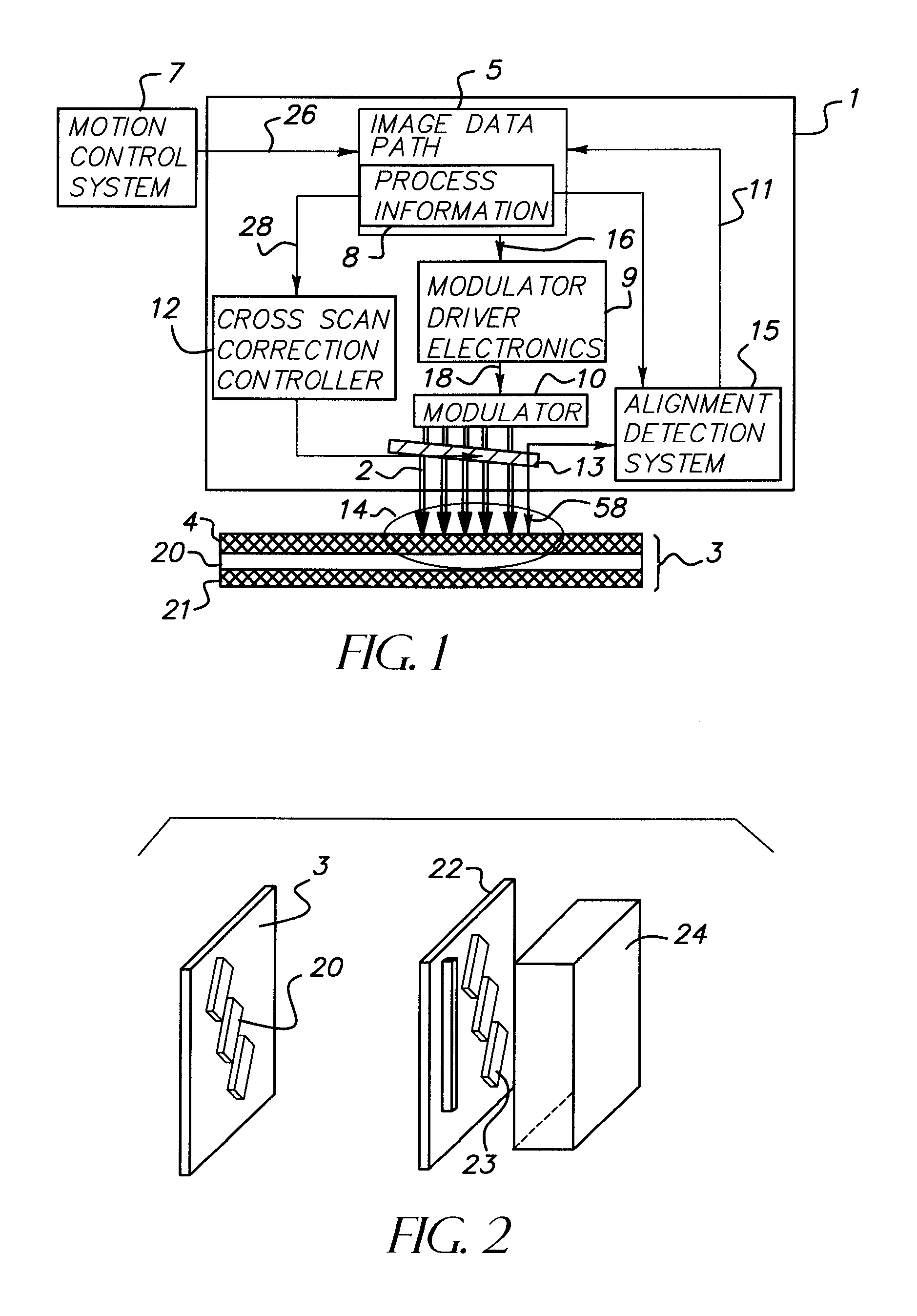Dynamic compensation system for maskless lithography
a dynamic compensation and maskless technology, applied in the field of printing patterns, can solve the problems of time elapse during the patterning process, face challenges involving time and space, and remain to be addressed, and achieve the effect of improving the registration of one layer of patterning to a subsequent layer of patterning, and high speed
- Summary
- Abstract
- Description
- Claims
- Application Information
AI Technical Summary
Benefits of technology
Problems solved by technology
Method used
Image
Examples
Embodiment Construction
[0033] The present invention is closed loop control system, which acts to align a second pattern that is being generated with a first pattern. The closed loop system operates dynamically, meaning that it operates during and integral with the pattern forming process. As a result, no additional alignment overhead is required.
[0034] Various pattern forming means exist that are compatible with this invention. The preferred embodiment describes a process whereby a substrate having a patterned first layer is coated with sensitive materials 4, as shown in FIG. 1. A pattern is formed in this second coated layer. One means of forming this pattern is through laser ablation. Alternately, the pattern can be formed through modification of a material coupled with a subsequent step. For example, one could sinter a material and wash off the not sintered components of the second layer. Or, one could polymerize a material and wash off the non-polymerized components of the second layer.
[0035] In add...
PUM
| Property | Measurement | Unit |
|---|---|---|
| channel size | aaaaa | aaaaa |
| channel size | aaaaa | aaaaa |
| wavelength | aaaaa | aaaaa |
Abstract
Description
Claims
Application Information
 Login to View More
Login to View More - R&D
- Intellectual Property
- Life Sciences
- Materials
- Tech Scout
- Unparalleled Data Quality
- Higher Quality Content
- 60% Fewer Hallucinations
Browse by: Latest US Patents, China's latest patents, Technical Efficacy Thesaurus, Application Domain, Technology Topic, Popular Technical Reports.
© 2025 PatSnap. All rights reserved.Legal|Privacy policy|Modern Slavery Act Transparency Statement|Sitemap|About US| Contact US: help@patsnap.com



